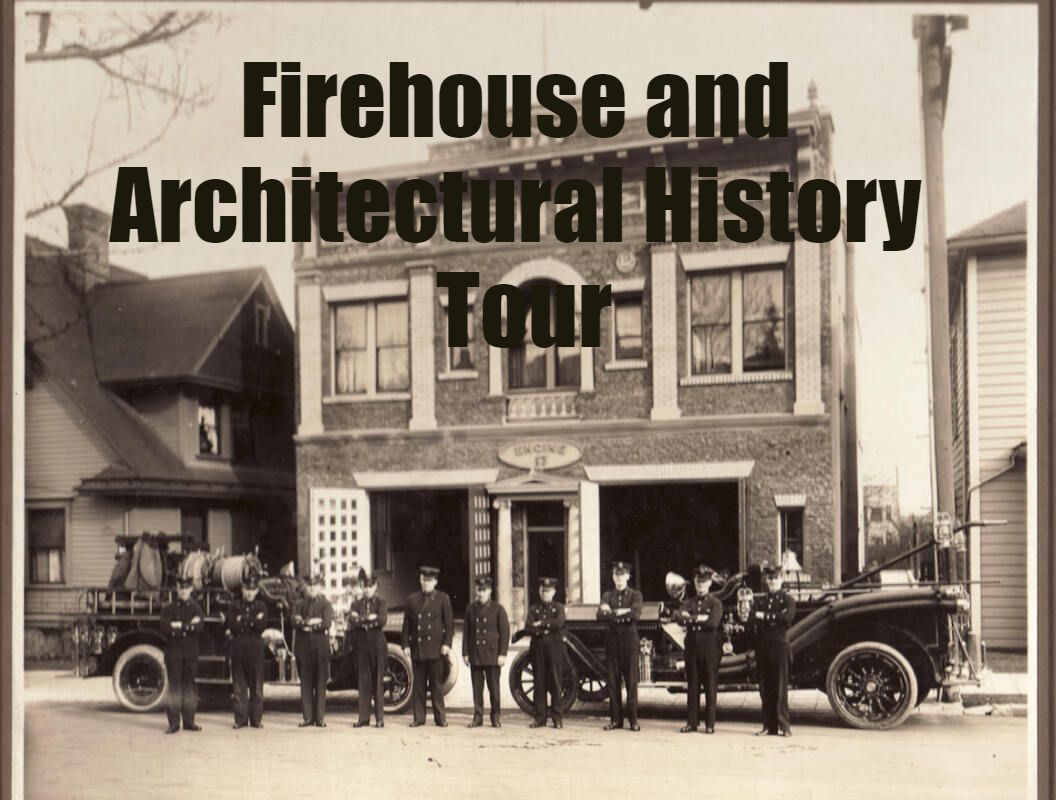The Pittock Mansion
(Recommended 15 to 30 minutes; or 1 hour if you are going inside the mansion, or if you're having a picnic lunch)
HISTORY:
The Pittock Mansion today offers us a uniquely personal opportunity to peek into the past, and study our world as it was,-
from the viewpoint of one Portland family.
High in Portland’s West Hills, above the hustle & bustle of commerce, Henry & Georgiana Pittock built this château-like mansion when they were in their 70s.
FOLLOW ALONG WITH PICTURES.
See Pictures, Henry & Georgiana Pittock.
Today it is a popular stop where visitors can experience the opulence of a bygone era. With a regal red tile roof, wrap-around decks, and a sprawling, well-kept lawn, the place is perfect to commandeer as your very own summer retreat.
There's no better place in town for picnics, bird watching, experiencing the change of seasons or surveying Portland's ever changing skyline.
The Mansion was home to the Pittock's from 1914 to 1919. During the late 1800s and early 1900s, their lives and work paralleled the growth of Portland from a small Northwest town site to a thriving city, with a quarter million population. With its eclectic architectural design and richly decorated interior, including family artifacts, the Mansion stands today as a living memorial of this family's contributions to the blossoming of Portland and its people.
English born Henry Lewis Pittock journeyed on a wagon train from Pennsylvania to Oregon in 1853, where, at the young age of 19, and in his own words, "barefoot and penniless," he began working for Thomas Jefferson Dryer's Weekly Oregonian newspaper. In 1860, at the age of 26, he married 15-year-old Georgiana Martin Burton of Missouri.
Georgiana had crossed the plains from Keokuk Iowa to Oregon Territory with her parents 6 years earlier than Henry.
An avid cyclist, he founded the Oregon Road Club – dedicated to ‘securing better roads”, – and rode his bicycle until the very end of his life.
A founder of the Rose Festival Association & enthusiastic Royal Rosarian, he loved riding his favorite mount, a large black horse, in parades. He also served as president of Vista House Association, which built Vista House in the Columbia River Gorge Highway, America's 1st auto tour route.
She dedicated her energies to the welfare of women and children.
She championed the Ladies relief society, Boys & Girls Aid Society, Parry Center for Children, and the Portland Old Peoples Home.
Dedicated to the women’s union, she was at the forefront of development of its Martha Washington Home of ‘wage earning girls & women strangers in the city”.
Georgiana’s backyard rose shows were the 1st incarnation of Portland’s Rose Society, and inspired Portland’s internationally famous Rose Festival.
A house of historical significance and visual magnificence, the Pittock Mansion today offers us a uniquely personal opportunity to peek into the past, and study our world as it was - from the viewpoint of one Portland family.
From the grounds, one can see Mount Rainer, Mount Saint Helens, Mount Adams, and Mount Hood, on a clear day.
Together, Henry and Georgiana began a long life of work, community service, and devotion to family, which would last 58 years and celebrate six children and eighteen grandchildren.
A consummate businessman, Henry Pittock took ownership of the Weekly Oregonian in 1860, changing its format to the daily paper we read today. He went on to build an empire incorporating, real estate, banking, railroads, steamboats, sheep ranching, silver mining, and the pulp and paper industry.
The couple was known for their quiet reserve, helpful demeanor, and love for the outdoors. Georgiana cherished gardening, and kept a terraced flower garden at the mansion covered with every kind of flower imaginable. She frequently adorned her house with cut flowers, and is recognized for originating the tradition of Portland's annual Rose Festival.
A vigorous outdoorsman, Henry rode horses in the Rose Festival parades, and was a member of the first party to climb Mount Hood, one of the spectacular peaks visible from the mansion. On one of his climbing expeditions, someone suggested that the group sit down and rest, at which point Henry responded, "The man who sits down never reaches the top." At which point, everyone looked at Henry and thought, Wow, who is this guy?
Henry and Georgiana were at the pinnacle of their successful lives when they commissioned architect Edward Foulkes to design and build their new home overlooking Portland, the city they loved.
They began planning and designing their new home in 1909. The mansion was completed in 1914, replete with stunningly progressive features, including a central vacuum system, intercoms, and indirect lighting. The house also creatively incorporated Turkish, English, and French designs. In keeping with their loyalty to their home state, the Pittocks hired Oregon craftsmen and artisans, and used Northwest materials to build the house. The final estate included the mansion, a three-car garage, a greenhouse, and the Italianate gate lodge servants' residence, all situated on 46 acres of land almost 1,000 feet above downtown Portland.
At 80 and 68 years old respectively, Henry and Georgiana moved to their new home, in 1914. The hard-working couple who had lived in the heart of Portland as it developed from a forest clearing to a bustling business center, now resided high in the hills, with a breathtaking vista of their beloved Portland. It was a warm and gracious house for both the adults and children of the family.
Georgiana died in 1918 at the age of 72, and Henry in 1919 at 84, after only 5 years in their new home.
The Pittock family remained in residence at the mansion until 1958, when Peter Gantenbein, a Pittock grandson who had been born in the house, put the estate on the market.
In 1962, the most devastating wind storm in Pacific Northwest recorded history, with wynds of 90 to 160 miles an hour, nearly destroyed the Mansion, as Typhoon Freda pummeled the region. It was a make it or break it moment for the Pittock mansion.
But the threat of demolition to the mansion at the hands of land developers, and the extensive damage caused by the storm, brought concerned citizens together to raise funds to preserve the site. Seeing this popular support, and agreeing that the house had value as a unique historic resource, the City purchased the estate in 1964 for $225,000. Fifteen months were spent restoring it before it opened to the public in 1965.
Although Ice Age glaciers never reached Portland, their floods & outwash plains repeatedly filled the flatlands with hundreds of feet of flood waters, mentioned earlier.
See pictures, and see placard.
During arid interglacial periods, huge dust storms blew silt onto our hills, leaving a layer of slippery topsoil up to 30 feet thick. Prolonged rains can launch landslides. As a result, the construction of roads and buildings has always been problematic in Portland's west hills.
This in turn has allowed the preservation of large areas of relative wilderness in Washington Park, the Hoyt Arboretum, and Forest Park, where Pittock Mansion is located.
Please let Phil know, if you will be going inside the mansion. Otherwise, he will take you all to the viewpoint.
Each stop named.
Does anyone have any questions?
(Recommended 15 to 30 minutes; or 1 hour if you are going inside the mansion, or if you're having a picnic lunch)
HISTORY:
The Pittock Mansion today offers us a uniquely personal opportunity to peek into the past, and study our world as it was,-
from the viewpoint of one Portland family.
High in Portland’s West Hills, above the hustle & bustle of commerce, Henry & Georgiana Pittock built this château-like mansion when they were in their 70s.
FOLLOW ALONG WITH PICTURES.
See Pictures, Henry & Georgiana Pittock.
Today it is a popular stop where visitors can experience the opulence of a bygone era. With a regal red tile roof, wrap-around decks, and a sprawling, well-kept lawn, the place is perfect to commandeer as your very own summer retreat.
There's no better place in town for picnics, bird watching, experiencing the change of seasons or surveying Portland's ever changing skyline.
The Mansion was home to the Pittock's from 1914 to 1919. During the late 1800s and early 1900s, their lives and work paralleled the growth of Portland from a small Northwest town site to a thriving city, with a quarter million population. With its eclectic architectural design and richly decorated interior, including family artifacts, the Mansion stands today as a living memorial of this family's contributions to the blossoming of Portland and its people.
English born Henry Lewis Pittock journeyed on a wagon train from Pennsylvania to Oregon in 1853, where, at the young age of 19, and in his own words, "barefoot and penniless," he began working for Thomas Jefferson Dryer's Weekly Oregonian newspaper. In 1860, at the age of 26, he married 15-year-old Georgiana Martin Burton of Missouri.
Georgiana had crossed the plains from Keokuk Iowa to Oregon Territory with her parents 6 years earlier than Henry.
An avid cyclist, he founded the Oregon Road Club – dedicated to ‘securing better roads”, – and rode his bicycle until the very end of his life.
A founder of the Rose Festival Association & enthusiastic Royal Rosarian, he loved riding his favorite mount, a large black horse, in parades. He also served as president of Vista House Association, which built Vista House in the Columbia River Gorge Highway, America's 1st auto tour route.
She dedicated her energies to the welfare of women and children.
She championed the Ladies relief society, Boys & Girls Aid Society, Parry Center for Children, and the Portland Old Peoples Home.
Dedicated to the women’s union, she was at the forefront of development of its Martha Washington Home of ‘wage earning girls & women strangers in the city”.
Georgiana’s backyard rose shows were the 1st incarnation of Portland’s Rose Society, and inspired Portland’s internationally famous Rose Festival.
A house of historical significance and visual magnificence, the Pittock Mansion today offers us a uniquely personal opportunity to peek into the past, and study our world as it was - from the viewpoint of one Portland family.
From the grounds, one can see Mount Rainer, Mount Saint Helens, Mount Adams, and Mount Hood, on a clear day.
Together, Henry and Georgiana began a long life of work, community service, and devotion to family, which would last 58 years and celebrate six children and eighteen grandchildren.
A consummate businessman, Henry Pittock took ownership of the Weekly Oregonian in 1860, changing its format to the daily paper we read today. He went on to build an empire incorporating, real estate, banking, railroads, steamboats, sheep ranching, silver mining, and the pulp and paper industry.
The couple was known for their quiet reserve, helpful demeanor, and love for the outdoors. Georgiana cherished gardening, and kept a terraced flower garden at the mansion covered with every kind of flower imaginable. She frequently adorned her house with cut flowers, and is recognized for originating the tradition of Portland's annual Rose Festival.
A vigorous outdoorsman, Henry rode horses in the Rose Festival parades, and was a member of the first party to climb Mount Hood, one of the spectacular peaks visible from the mansion. On one of his climbing expeditions, someone suggested that the group sit down and rest, at which point Henry responded, "The man who sits down never reaches the top." At which point, everyone looked at Henry and thought, Wow, who is this guy?
Henry and Georgiana were at the pinnacle of their successful lives when they commissioned architect Edward Foulkes to design and build their new home overlooking Portland, the city they loved.
They began planning and designing their new home in 1909. The mansion was completed in 1914, replete with stunningly progressive features, including a central vacuum system, intercoms, and indirect lighting. The house also creatively incorporated Turkish, English, and French designs. In keeping with their loyalty to their home state, the Pittocks hired Oregon craftsmen and artisans, and used Northwest materials to build the house. The final estate included the mansion, a three-car garage, a greenhouse, and the Italianate gate lodge servants' residence, all situated on 46 acres of land almost 1,000 feet above downtown Portland.
At 80 and 68 years old respectively, Henry and Georgiana moved to their new home, in 1914. The hard-working couple who had lived in the heart of Portland as it developed from a forest clearing to a bustling business center, now resided high in the hills, with a breathtaking vista of their beloved Portland. It was a warm and gracious house for both the adults and children of the family.
Georgiana died in 1918 at the age of 72, and Henry in 1919 at 84, after only 5 years in their new home.
The Pittock family remained in residence at the mansion until 1958, when Peter Gantenbein, a Pittock grandson who had been born in the house, put the estate on the market.
In 1962, the most devastating wind storm in Pacific Northwest recorded history, with wynds of 90 to 160 miles an hour, nearly destroyed the Mansion, as Typhoon Freda pummeled the region. It was a make it or break it moment for the Pittock mansion.
But the threat of demolition to the mansion at the hands of land developers, and the extensive damage caused by the storm, brought concerned citizens together to raise funds to preserve the site. Seeing this popular support, and agreeing that the house had value as a unique historic resource, the City purchased the estate in 1964 for $225,000. Fifteen months were spent restoring it before it opened to the public in 1965.
Although Ice Age glaciers never reached Portland, their floods & outwash plains repeatedly filled the flatlands with hundreds of feet of flood waters, mentioned earlier.
See pictures, and see placard.
During arid interglacial periods, huge dust storms blew silt onto our hills, leaving a layer of slippery topsoil up to 30 feet thick. Prolonged rains can launch landslides. As a result, the construction of roads and buildings has always been problematic in Portland's west hills.
This in turn has allowed the preservation of large areas of relative wilderness in Washington Park, the Hoyt Arboretum, and Forest Park, where Pittock Mansion is located.
Please let Phil know, if you will be going inside the mansion. Otherwise, he will take you all to the viewpoint.
Each stop named.
Does anyone have any questions?




















